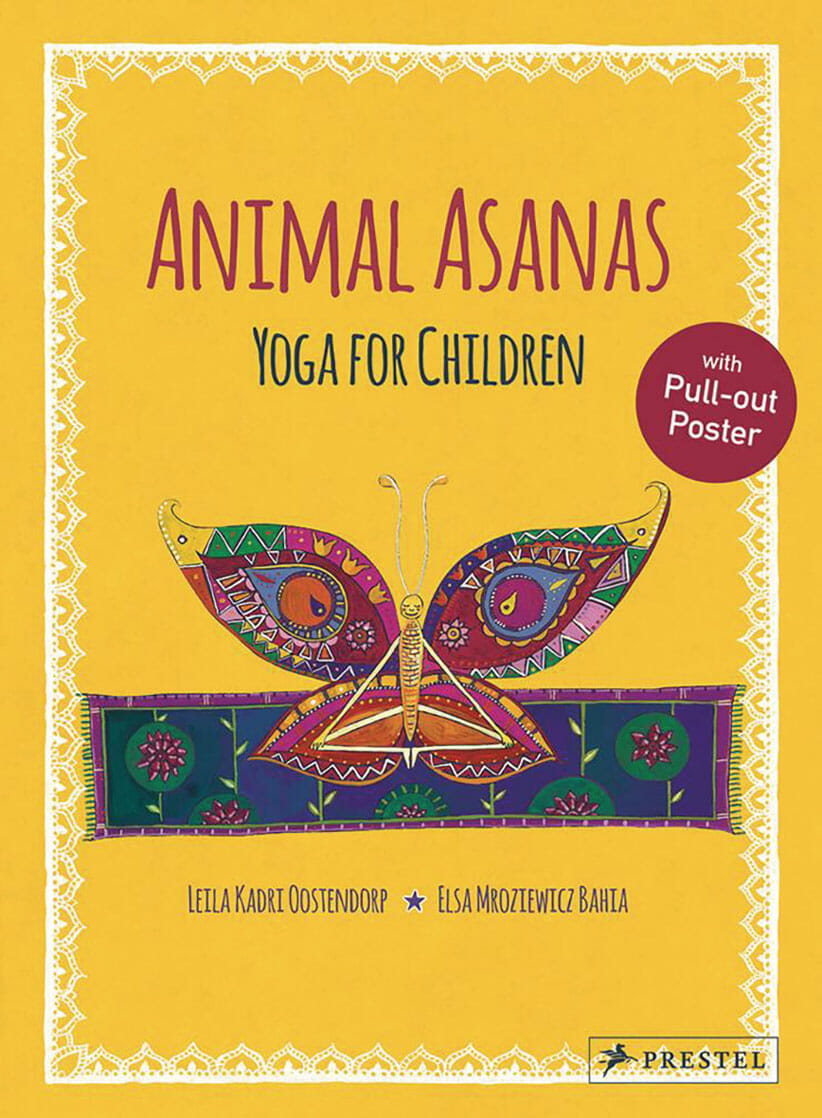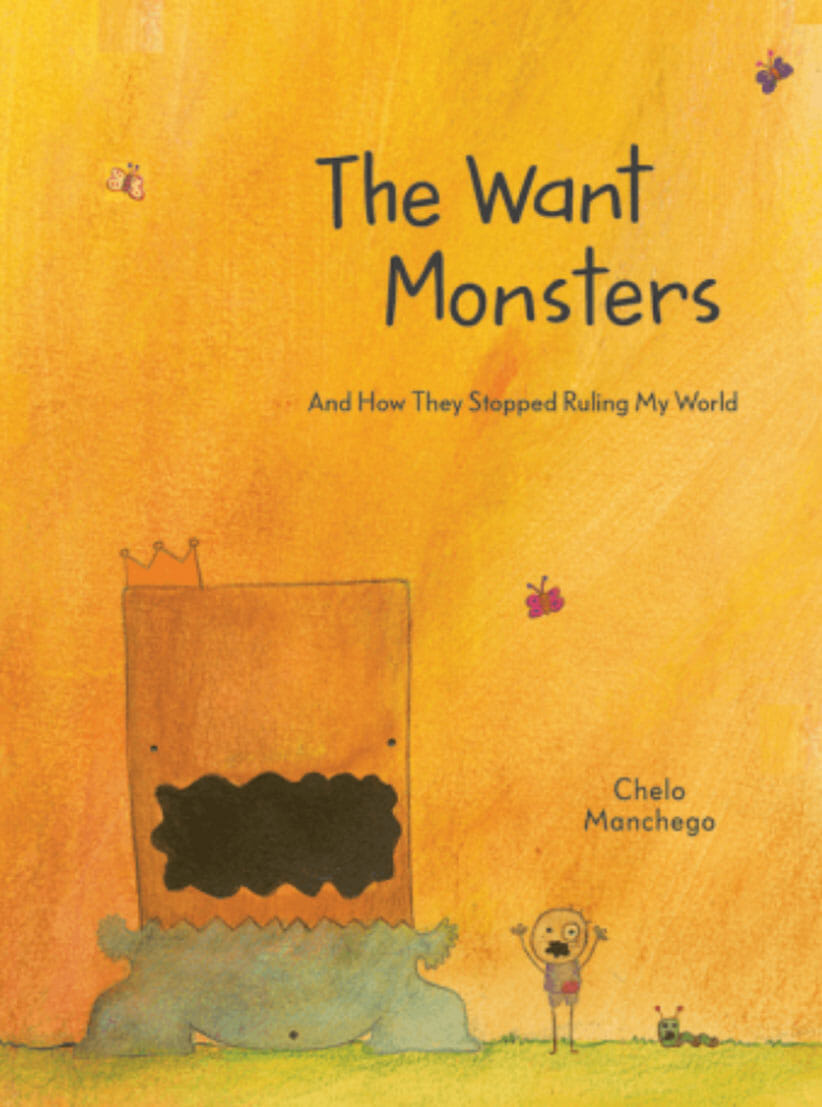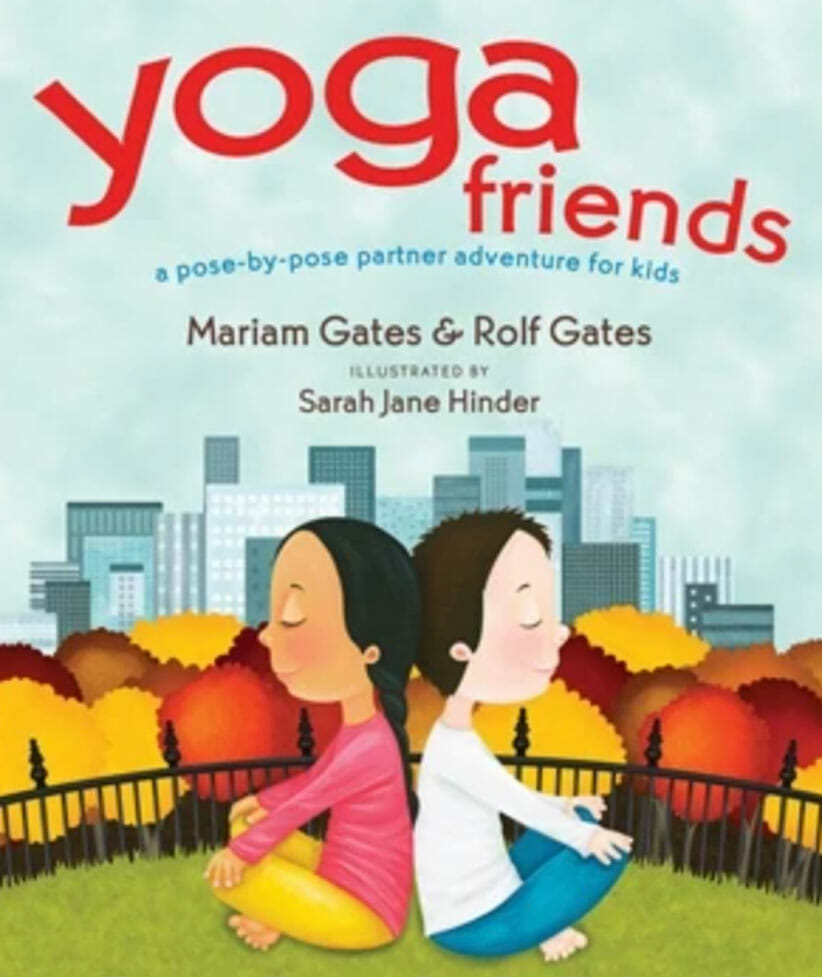
I teach yoga to both children and adults, and as a mother of two young boys, aged 6 and 9, I always welcome meaningful suggestions for books related to yoga and meditation. These days we need all of the creative resources we can find for education and entertainment! Kids yoga is such an important stress reliever and something we need in the pandemic and beyond. If you’re looking for some resources to use while reading with kids that allow you to share yoga and meditation, here are some ideas.
4 Books for Families, Kids, and Teachers

Animal Asanas: Yoga for Children, by Leila Kadri Oostendorp and Elsa Bahia (Prestel Press)
Animal Asanas: Yoga for Children shares 14 introductory asanas that are presented in a highly visual way to inspire children to practice yoga.
The vivid and colorful illustrations of animals are shown in a different yoga posture. For example, there is a brightly colored camel doing camel pose. All of the illustrations are accompanied by step-by-step small stick figure diagrams and written guidance for safely entering the postures. Each posture also has a fun factor with the sounds or movements that each animal makes.
In the introduction to each animal, there is a section on the physical, mental and emotional benefits of practicing each posture. The end of the book offers a rainbow-chakra-guided relaxation filled with affirmations for each chakra. The colors and ornamental patterns that decorate this book are very kid friendly.
Bonus: A free pull-out colored poster with each of the 14 animal postures circling around a central tree.
I like Animal Asanas, it seems approachable to a wide age range, from the accessible cow moo-ing to the younger students to the suggestion that the older kids take some time to relax with yoga before doing their homework. Embodying the animal poses from this book enlivened my teaching to both the children AND the adults.
Recommended for ages 5-11
Yoga Friends: A Pose-by-Pose Partner Adventure for Kids, by Mariam Gates and Rolf Gates, Illustrated by Sarah Jane Hinder, (Sounds True)
When I introduced Yoga Friends: A Pose-by-Pose Partner Adventure for Kids to my two children, I could see them really focus on the material as I led them through the Dora-like wide-eyed, smiling, multi-ethnic pairs of children displaying their partner yoga asanas in a combination of natural settings and city dwellings. What looked static in the book became my kids’ cue to move and breathe as they found the postures for themselves.
This session was a journey for my elementary school-age students. Along the way, we discovered some new postures and had a lot of laughs. Mostly, the temptation to grab some body part of their sibling was too hard to resist.
The goal of these asanas is to have fun coordinating the body and mind with the breath and to develop the skills for teamwork through the partner practices. It is nice to offer a new way to play together cooperatively with the goal of gaining some peace and self-mastery along the way. The bold sentences that decorate the illustrations offer a kid-friendly approach to symbolism and imagery and to guide the alignment and actions that take children through the asanas.
Visually, this is a really fun book just to read. My kids enjoyed looking at the pictures and trying out the postures together.
For my kids, it felt like adding one or two partner postures to a typical yoga class might be an effective way to introduce the teamwork concept—more so than trying to do the whole class as a partner event. Also, I feel it’s important to be selective when partner yoga poses and use of touch are appropriate for kids.
Recommended for ages 4-8.

Meditate with Me: A Step-By-Step Mindfulness Journey, by Mariam Gates and Margarita Surnaite, Dial Books/Penguin Random House
The narration of this journey follows five different animal friends during their day. Meditate with Me: A Step-By-Step Mindfulness Journey offers verbal cues for the reader to try out meditation. Over backgrounds of ocean waves, clouds in the blue sky, cityscapes, and a classroom, we hang out with our new animal friends.
Through these animal relationships, we learn how to breathe into the body to relax, observe the ways different emotions feel in our body, discover how to tune in to the sounds around and within us, and learn how to observe the thoughts coming and going.
One of the techniques shared includes images of the animal characters playing with a jar filled with glitter. They shake the jar and place it down, allowing the glitter to settle. As the glitter settles, we are offered the suggestion that our thoughts and emotions can also settle down if we sit still and watch them. We can then create space both in the rest of the jar and in our heart and mind.
The book is kid-reader-friendly. My six-year-old read it in its entirety; he said felt smart and accomplished because he could read, connect with, feel what the book is asking of him. I imagine any one of the elements offered could be a meditation tool in and of itself, both as an exercise and a thought to be carried through one’s day. One of the final lines sums up the simple and powerful confidence that is instilled through the messages in the book: “Know that this calm place is always just one breath away.”
Recommended for kids ages 4-8.

The Want Monsters: And How They Stopped Ruling My World, by Chelo Manchego (Shambhala Publishing)
This is a modern-day fable about “The Want Monsters”. The Want Monsters: And How They Stopped Ruling My World is brilliantly crafted by author Chelo Manchego, a 24-year-old artist and meditation practitioner from El Salvador, who currently lives in Los Angeles. The central character’s personal “Want Monster” looks like a brown paper bag with legs and wearing a crown, “cos he wants” to be famous. The Monster changes size according to the amount of “Wants” he has.
Given today’s consumerism-based mentalities that “more is better” and “if this is good you’ll want more”, this book could not be more timely. It teaches children, and the rest of us, that more is not necessarily better. And that listening to your inner wisdom is more helpful than always trusting our personal “Want Monster” and making it grow.
By the end of the book, we learn tools to keep the Want Monster in its place, cultivate how we can listen to it when necessary, and basically keep it in our pocket for emergencies. We learn to treat our Want Monster more as a friend than as something terrorizing our lives and those around us. The teachings are so necessary in order for children (and all of us) to keep a check on their values, happiness and yes “wants”.
After reading, I asked my children the following day what they enjoyed about the book and the lessons they learned. Rhoads, age 6, said, “He doesn’t have to listen to all his wants now and that it would be okay to think before you say what you want.” Chaska, age 9, said he is more mindful of his wants now and thinks about the consequences of his choices. “I might want to eat the whole cake, but how will I feel afterwards? So perhaps I’ll feel better if I eat just a slice, that way I won’t feel sick.” Both children enjoyed the story and loved the illustrations.
They also loved the blank page at the end of the book where they were invited to draw their own personal Want Monster. They also liked how through reading a story they heard the message that gave them coping skills.
Recommended for ages 4-6.
Reading with Kids: Books About Yoga
What I enjoyed in all of the books is that the messages both adults and children need to hear are pretty similar. The simplicity of the mindfulness practices should not be overlooked or understated. Coming together to practice can be fun. Making a story the vehicle for the teachings is a great idea. If you need some new inspiration for your classes and your kids, try out some of these resources.
Sarah Tomlinson is a British born Yantra expert, internationally acclaimed Yantrika (Yantra teacher and practitioner), yoga teacher and artist, with renowned fans across the globe including Elena Brower and Sharon Gannon, co-founder of Jivamukti Yoga. Sarah worked extensively with her mentor Harish Johari in India, he initiated her into the spiritual practice of painting Yantras. Sarah is the creator of the Yantra Bliss Oracle Deck, 2017, and author of Coloring Yantras (Shambhala Publishing, 2017). She leads retreats and Yantra workshops around the world and enjoys lots of time by the ocean with her husband and two young boys.

